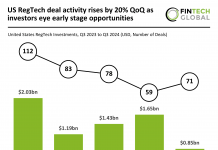A recent whitepaper by client data management firm iMeta has underlined three vital pillars of the customer experience journey in financial services.
In the whitepaper, iMeta spoke to Aurora managing partner Sean Vickers in a Q&A session where they covered the three topics of personalisation, ownership and support as the three vital pillars in the customer experience journey for companies in the financial services sector.
On personalisation, iMeta said that the topic meant giving its clients the ability to meet their own specific requirements, which are driven by the clients’ desire to personalise the service they offer their own clients.
The company stated in the blogpost, “What we’re developing is a standardised KYC onboarding rule set and risk assessment. We have out of the box functionality that you can plug in and play with, however we’ve made it easy to configure and tweak.
“We can easily change it to our clients’ specific needs for their customers. As well as complying with their policies, onboarding processes and risk scoring, it’s also about giving our clients the ability to tailor the platform to provide a really great experience to their clients.”
Vickers came to the definition from this that if a customer has specific needs, iMeta can tailor the process enough so that it feels personalised and bespoke, but not so much that you compromise the operational process.
While this is not necessarily a one-size-fits-all approach, iMeta remarked that it designed its CLM platform to be easy to change – but recognised there were certain challenges with this, “If you’re trading a company based in the British Virgin Isles with an interest swap trading out of the US, there are certain documents and data you have to collect in order to be compliant with the applicable regulations to that particular business relationship. What we’re providing is a standardised set of rules, but also the flexibility to adjust them to meet your own banking identity with your clients.”
The second pillar – ownership – is seen as more complex by iMeta. When asked by Vickers who they thought owns the client experience in the financial services space, the company responded, “It’s in many different areas. The relationship manager or front office has the overall relationship with the client, but I think it’s getting the other departments that touch the client journey unified with the overall client experience.
“If you can use technology to overlay a coherent process and bring all of the departments and their needs together, then you can align the different requirements which cover sales, compliance, risk etc. That way you can really tailor the client journey in a collectively owned journey.”
The ownership of client experience can be quite a convoluted topic, with Vickers noting that everyone owns the experience in their own way – making the final answer to the question quite unclear.
One of the key parts of customer experience is ensuring the process of customer onboarding and management is efficient and is as time-effective to the customer as possible. According to Vickers, this efficiency is important and is being spread further across a wide range of ecosystems.
He said, “When I first started in corporate banking, making my customers happy was this: I’d pre-fill in the forms which we’d then send to them in the post and say, ‘We’ve saved you a job. I’ve gone through and I’ve filled in as much as I can, I’ve put some little things in the side of it, you just have to sign and fill in the things that we don’t know and get it back to us.’
“Because in our head we were like, ‘If we do that and Bank X across the road doesn’t do that, we’ve delighted the client!’ Now, that was customer experience, and it was really straight forward, and it wasn’t sexy or automated. If the phone rings, you’re up in three rings. ‘Hi, yep! You’ve got us. What do you need?’ That was customer experience and in some ways those guys haven’t changed.
“Then you move into something like onboarding and for them good CX is around metrics. ‘I did something in a certain period of time, I did something and the quality was good. I did something and my interactions with the client, on behalf of the relationship team, were positive.’ That’s customer experience for them.
“Then you move down the food chain again and say, ‘Well, I’m making a KYC profile. Have I done it in the right timeline?’ Those metrics cascade and when any of those things don’t work, it surfaces and the RM says, ‘Wait, I’m not having that nice conversation, the customer is not happy!’ That’s all they care about. So, all those issues surface but it’s all the operational elements that are trying to feed something quite qualitative. So, for me, it comes back to very simple basics and then you can make it really complicated.”
Vickers continued by stating that organisations that have a very heavy ecosystem have started to create roles that look at customer experience, adding that if there is something the customer experience process that is detracting from a good conversation, that is where the focus needs to be.
As a way of boosting ownership for customers, iMeta remarked it was helping companies simplifying their processes by aiding with automation, “From our clients’ perspective, we are enabling them to use our technology to automate as much of the onboarding and KYC process as possible, to eliminate unnecessary manual process by using rules and workflow to determine what activities are client/client proxy and what are KYC or financial crime analyst roles, but at the same time to still deliver that personal touch, which is a great outcome.”
The third and final key pillar outlined was support, a vital if not the most vital part of the customer experience, especially during times of strife.
What does support look like to iMeta when things go wrong? The company stated, “We want to fix it. In terms of onboarding, a lot of things can potentially go wrong if a company has manual processes in place. This is often the case due to the data input required and use of workflow systems that follow an iterative process of collecting information about the client, which can then trigger certain risk events. Then there’s handovers and passing tasks and data from department to department.
“The goal should be to use the right tech and data to automate the more mundane parts of onboarding and identify high risk clients early on, inform them and then have your KYC experts use their forensic analysis to really put that to work, rather than conducting lots of manual data entry and having a very iterative onboarding process with multiple client touchpoints.”
Vickers challenged this point by suggesting what would happen if, as a customer, he tried to open a cash account but is unsuccessful due to someone incorrectly assessing him and rating him as high risk – leading to the creation of a bad customer experience.
iMeta retorted, “That’s where technology comes in, so you don’t get to that place. – where you would get to that is if you’re using too much human interaction and manual processes. Whereas, if you can automate the process, and I mean truly automate large parts if not the whole process – not merely digitising a manual process – you are collecting data effectively, risk assessing effectively, then you know you won’t get to that place to start off with. That’s what we are trying to help our clients achieve.”
When bad customer experiences happen, it is imperative on a company to be able to neutralise and solve the problem as soon as possible. How does iMeta see the best way of this being achieved? The company said the best approach is to use a combination of intelligent rules engine and API connectivity to third party sources to enrich data and find information on the client early. At the beginning, this enables a company to work out if someone is going to be high-risk, and allow it to decide whether they want to onboard the customer at all.
iMeta stated “If you can be more intelligent about it and use tech to actually automate a lot of the manual processes, and flag the high-risk cases for analysts to focus on – that’s where you get some real efficiencies.”
Find the full whitepaper here.











